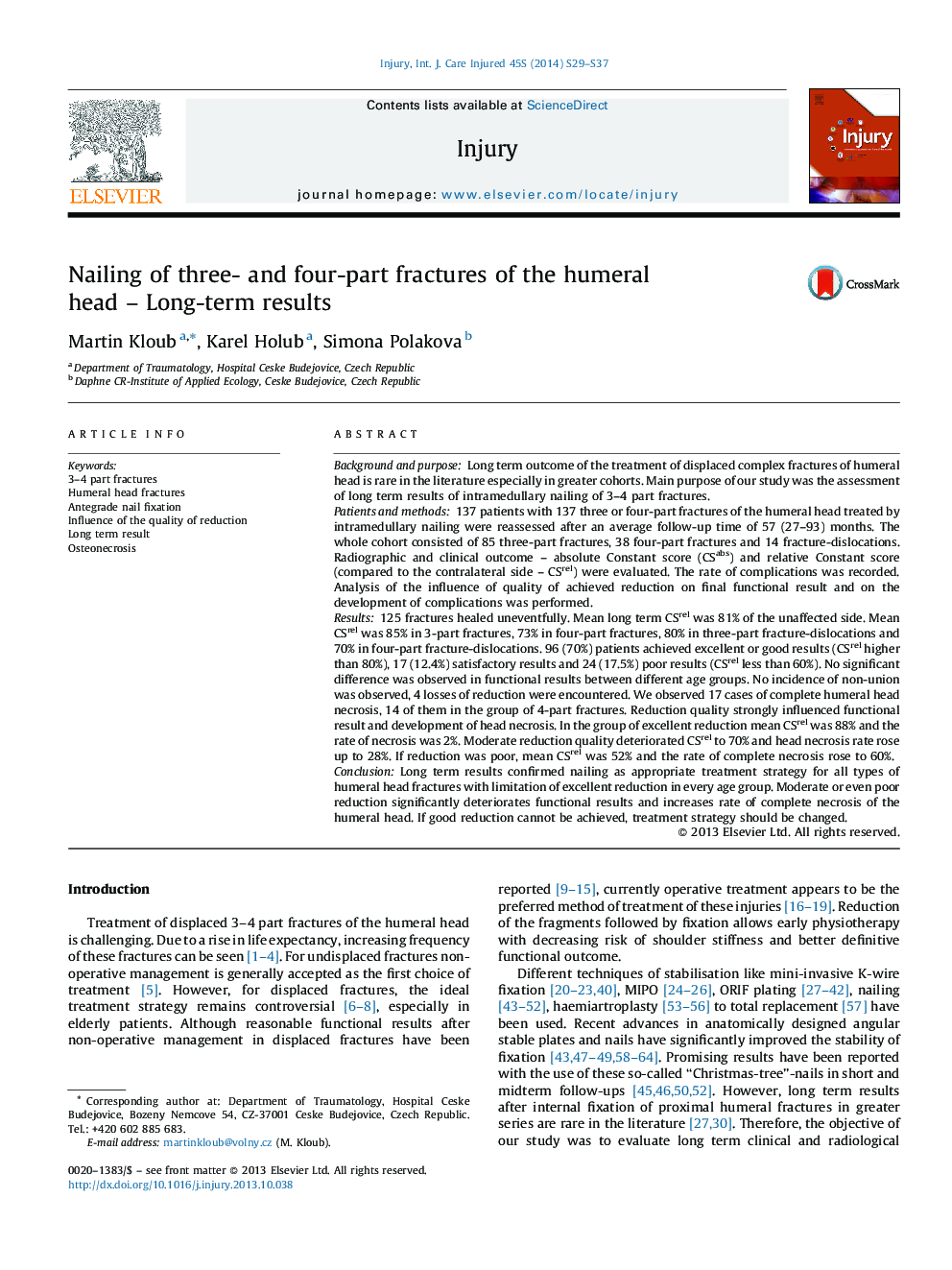| کد مقاله | کد نشریه | سال انتشار | مقاله انگلیسی | نسخه تمام متن |
|---|---|---|---|---|
| 3240103 | 1206031 | 2014 | 9 صفحه PDF | دانلود رایگان |
Background and purposeLong term outcome of the treatment of displaced complex fractures of humeral head is rare in the literature especially in greater cohorts. Main purpose of our study was the assessment of long term results of intramedullary nailing of 3–4 part fractures.Patients and methods137 patients with 137 three or four-part fractures of the humeral head treated by intramedullary nailing were reassessed after an average follow-up time of 57 (27–93) months. The whole cohort consisted of 85 three-part fractures, 38 four-part fractures and 14 fracture-dislocations. Radiographic and clinical outcome – absolute Constant score (CSabs) and relative Constant score (compared to the contralateral side – CSrel) were evaluated. The rate of complications was recorded. Analysis of the influence of quality of achieved reduction on final functional result and on the development of complications was performed.Results125 fractures healed uneventfully. Mean long term CSrel was 81% of the unaffected side. Mean CSrel was 85% in 3-part fractures, 73% in four-part fractures, 80% in three-part fracture-dislocations and 70% in four-part fracture-dislocations. 96 (70%) patients achieved excellent or good results (CSrel higher than 80%), 17 (12.4%) satisfactory results and 24 (17.5%) poor results (CSrel less than 60%). No significant difference was observed in functional results between different age groups. No incidence of non-union was observed, 4 losses of reduction were encountered. We observed 17 cases of complete humeral head necrosis, 14 of them in the group of 4-part fractures. Reduction quality strongly influenced functional result and development of head necrosis. In the group of excellent reduction mean CSrel was 88% and the rate of necrosis was 2%. Moderate reduction quality deteriorated CSrel to 70% and head necrosis rate rose up to 28%. If reduction was poor, mean CSrel was 52% and the rate of complete necrosis rose to 60%.ConclusionLong term results confirmed nailing as appropriate treatment strategy for all types of humeral head fractures with limitation of excellent reduction in every age group. Moderate or even poor reduction significantly deteriorates functional results and increases rate of complete necrosis of the humeral head. If good reduction cannot be achieved, treatment strategy should be changed.
Journal: Injury - Volume 45, Supplement 1, January 2014, Pages S29–S37
